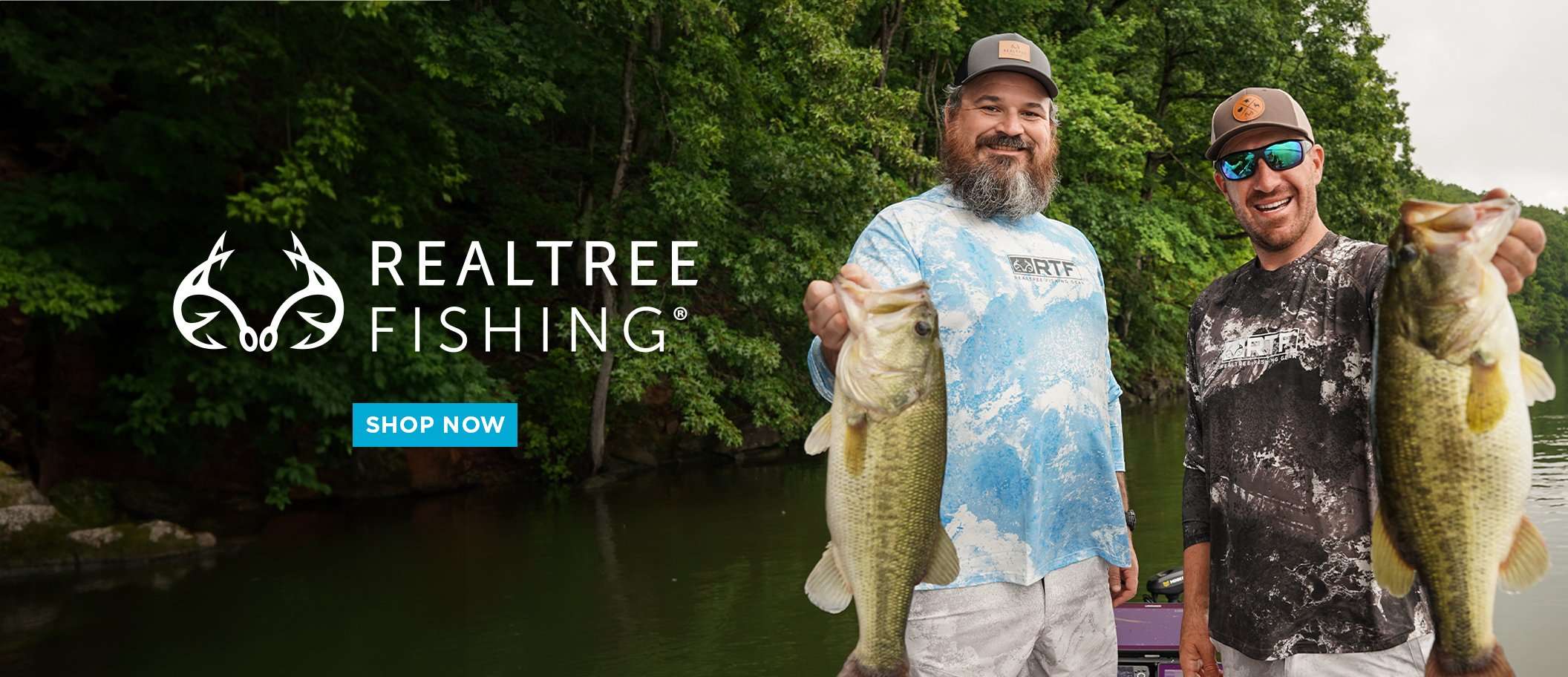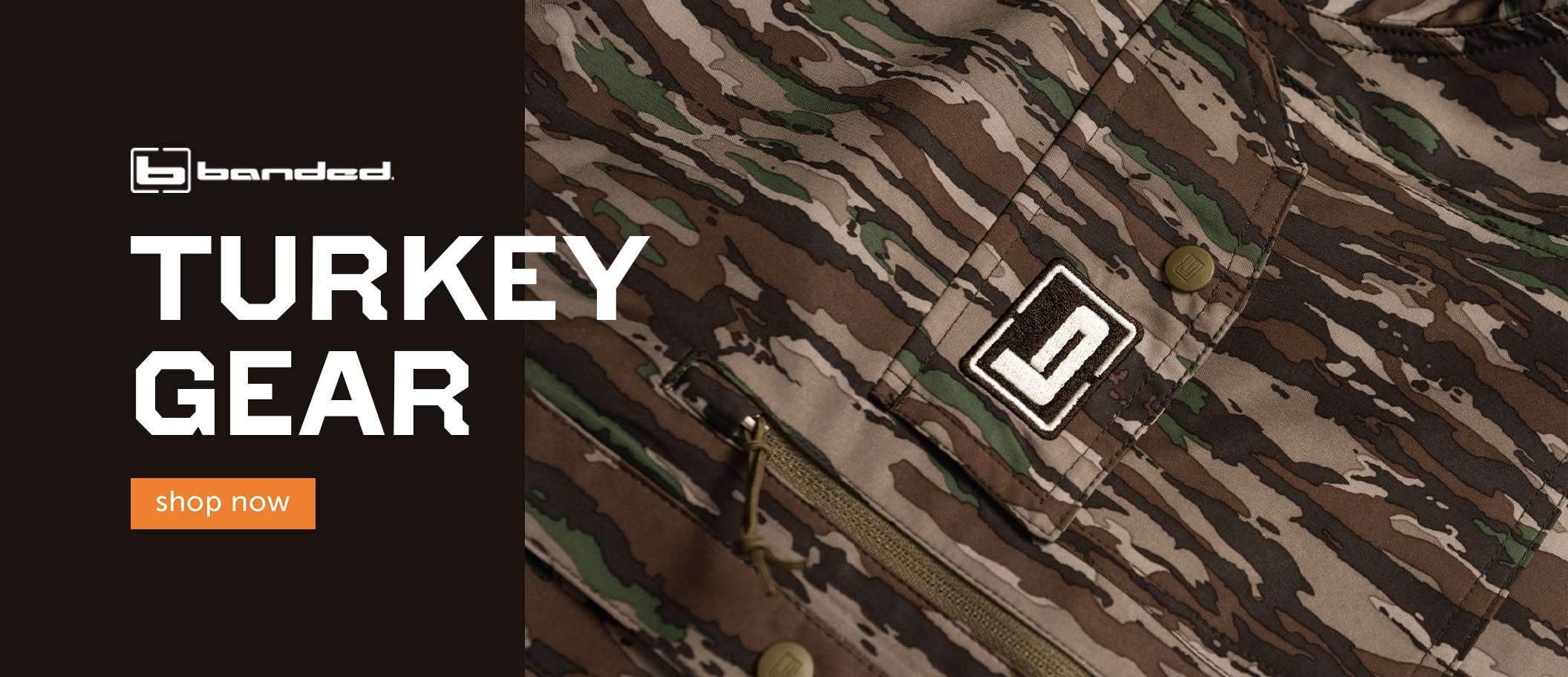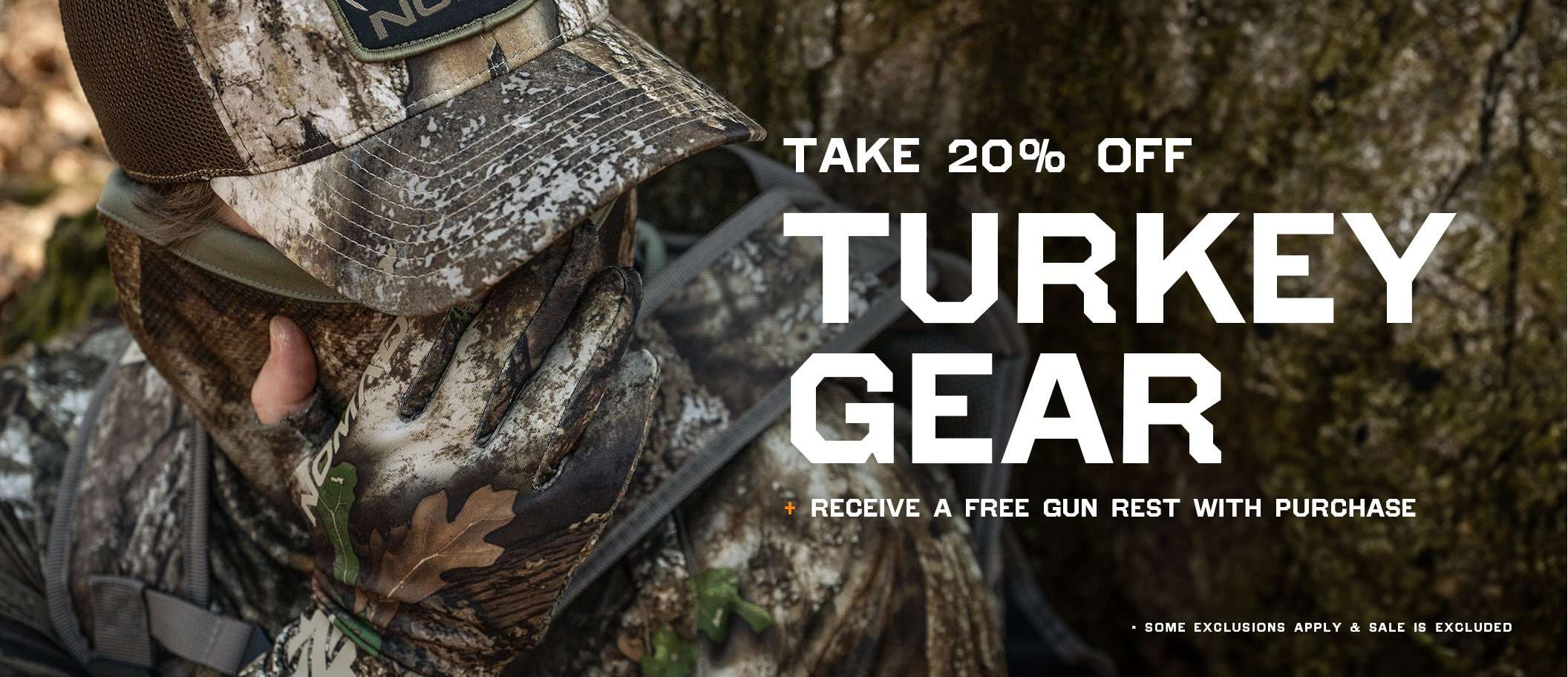These scrappy fish of the temperate bass family are hard fighters and great on the table

It’s all smiles when the white bass run is on in the early spring.
It’s crappie season, or about to be, in much of the country. When early spring water temperatures hit the mid-50s, the popular panfish begin moving toward shallow spawning grounds, and droves of anglers hit the water in hopes of catching them. But there’s another hot bite happening at the same time for white bass — a species that doesn’t have the glitz and glamour of crappie, but is arguably more fun to catch. A few — me included — would argue that white bass are better to eat, too. More on that outrageous statement later in the article.
Average keeper-sized white bass are usually 12 to 15 inches long and weigh less than 2 pounds, and so they’re frequently lumped in with panfish. But 3-pounders aren’t uncommon in some waters, and state-record white bass often tip the scales at 4 to 5 pounds. The IGFA white bass world record is a tie between two fish that each weighed 6 pounds, 13 ounces. One of them was caught in Louisiana, and the other was caught in Virginia. I suppose one could fit a near 7-pound fish into a pan, but it would need to be a large pan.
Unlike other “panfish,” white bass aren’t likely to be caught from your favorite farm pond, either. You need to look for them in major lakes, rivers, and their tributaries. Even so, finding white bass, at least at certain times of the year, isn’t difficult. They’re extremely aggressive, and they frequently feed together in frenzied schools. Find one of those schools and it’s not uncommon to hook up on nearly every cast. White bass of all sizes are thick, muscular fish that put up a hard fight, so show up prepared for battle.
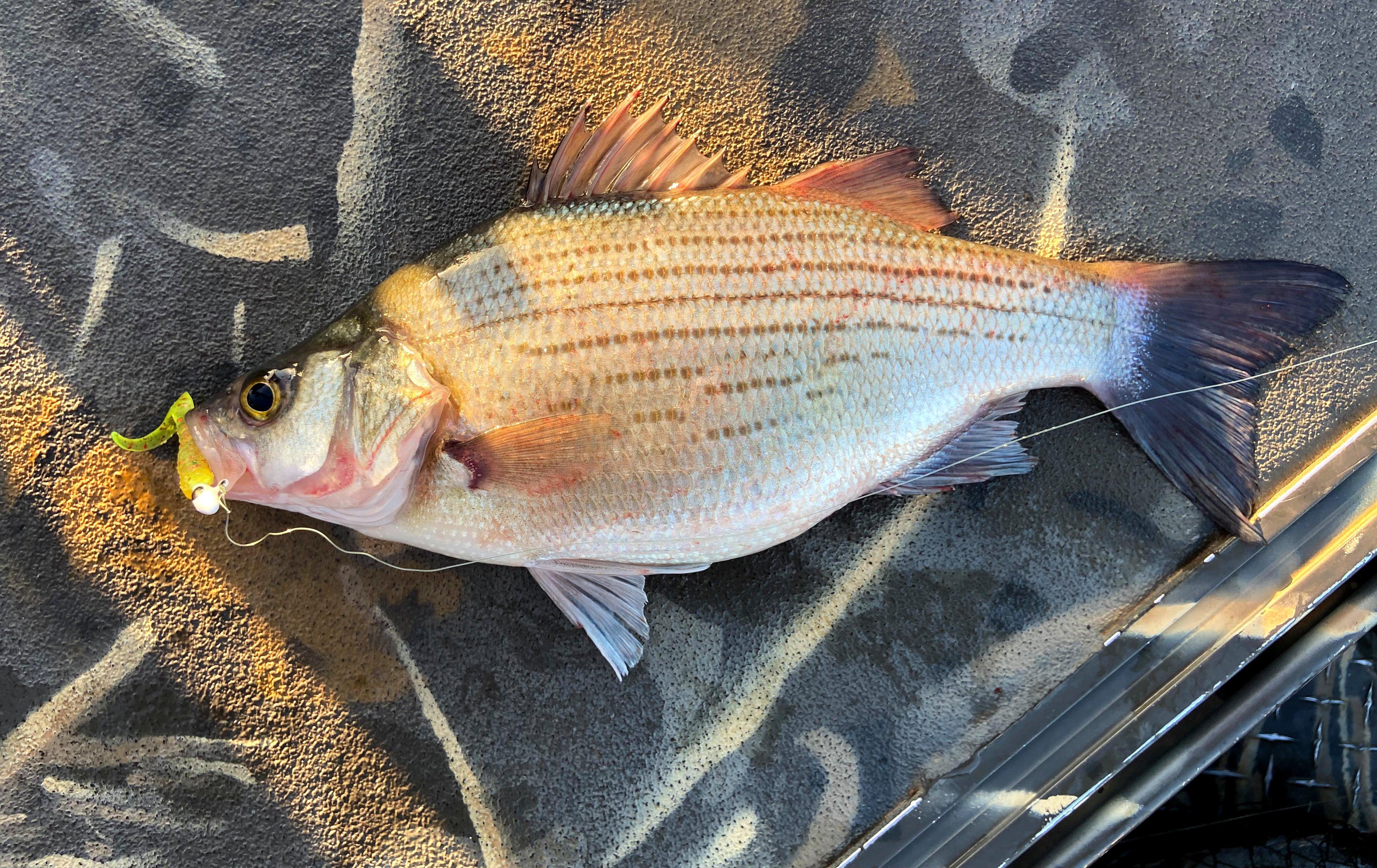
A 1/16-ounce crappie jig and twister tail is a go-to combo for white bass.
FISHING THE SPRING WHITE BASS RUN
Early spring, during the spawning “run,” is a favorite time to get in on white bass action. While black bass, such as largemouths and smallmouths, are actually a sunfish (same as crappie and bluegill), white bass are in the temperate bass family, which also includes species like stripers and yellow bass. White bass spawn in the shallows, but they don’t fan and guard individual beds in calm water like sunfish; instead, white bass spawn in moving water, in mild current, or on wind-swept shorelines. On lakes and major rivers, you can find schools of white bass moving into shallow feeder creeks and tributary streams to spawn once the water temperature hits the mid-50s.
- DON’T MISS: How to Find Bass on a New Lake
That time frame is early March to mid-April, depending on your home waters, and if the conditions align, the action in shallow creeks can be incredible. My wife, son, and I got into a great white bass run on March 3 several years ago in Kentucky. Normally, the reservoir we fish is kept at winter pool — 5 feet lower than summer pool — until early April. But that year, several days of heavy, warm spring rains jumped the lake just enough to allow me to access a tributary creek that’s normally too skinny to reach in my 16-foot War Eagle.
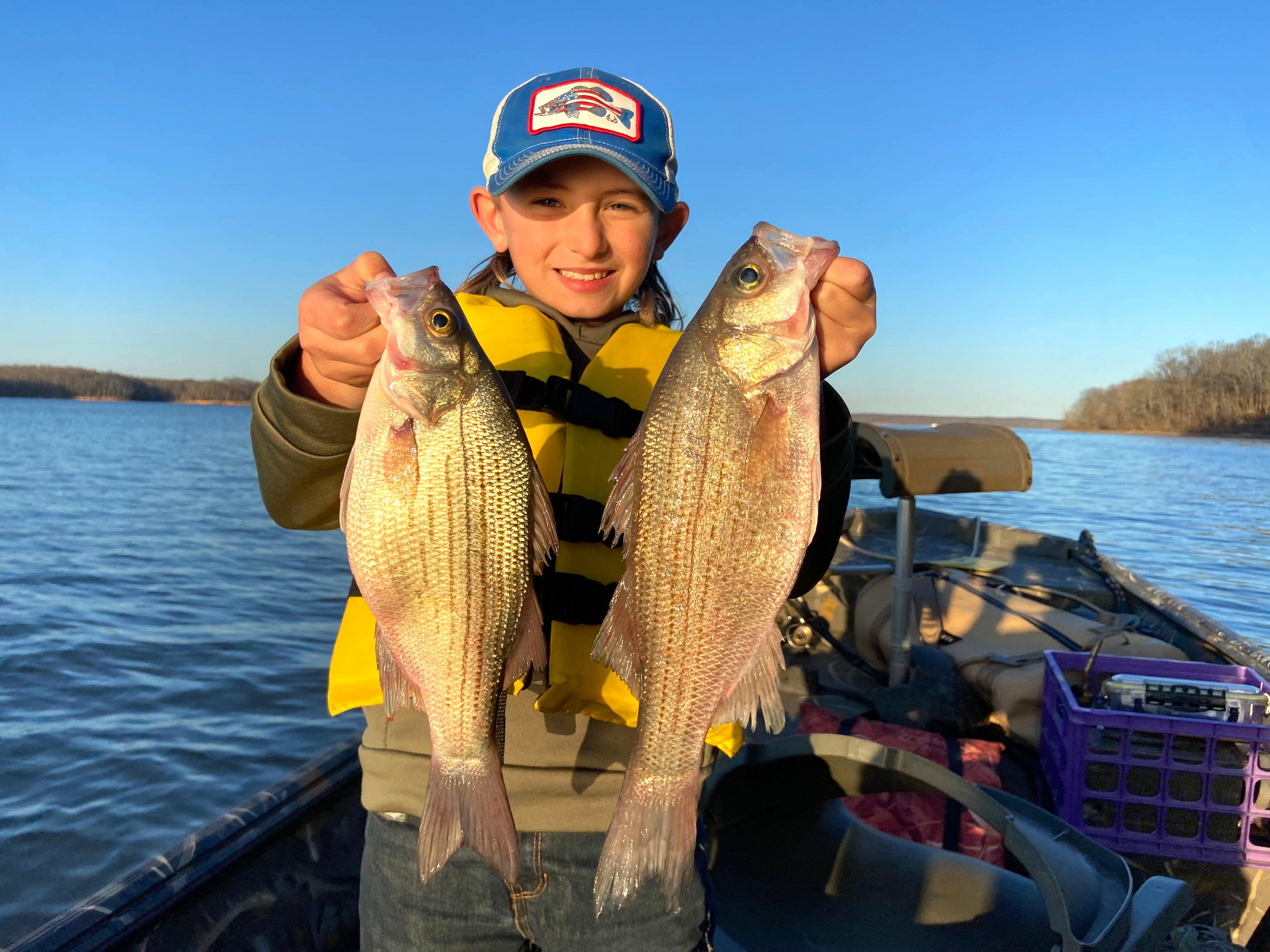
The author’s son shows off a pair of big early spring white bass.
The water temperature was 52 degrees, and we were casting curly-tail grubs for whatever would bite when one of us hooked into a nice keeper white bass, right in the mouth of the creek. We fished around a while with jigs and then, on a whim, I picked up a casting rod, tied on a white Bandit Series 200 crankbait, which dives to about 8 feet, and fired it across the tributary. I hooked into a thick, 2-pound white bass, and another one just like it on the ensuing cast.
My son was 7 at the time and not quite ready to throw a baitcaster, but he could sure reel it in. I began making long casts and then handing the rod to him with instructions to “reel it fast as you can.” After catching nine or 10 white bass, he declared himself physically worn out and gave the crankbait back to me.
Action like that on a creekbank can be accessible to bank fishing or kayaks, but it’s highly dependent on water levels and is often short-lived. That spring, the heavy rains were too much of a good thing, and the lake kept rising. We motored back into the tributary the very next day, and the water had gotten a little too high, spilling into the brush on the shoreline. Our white bass disappeared.

You don’t need complicated electronics to find white bass in open water. A simple color screen to help ID suspended bait schools will suffice.
OPEN WATER WHITE BASS
Before and after the spawn, white bass fishing is most productive from a boat over open water. Again, unlike a largemouth or crappie that might hide out in a brush pile to ambush prey, white bass roam in open-water schools to harass shad and other baitfish. Finding them in your local fishery is often a matter of understanding seasonal baitfish movements.
In the early spring, the same white bass that are moving into major creek arms to spawn will also stage along the way to feed on schools of shad and other bait that are also moving shallow, both in preparation for their own spawning efforts and to take advantage of the plankton blooms that occur as the shallows warm. Trolling the edges of major creek channels and simply watching for schools of bait, and the white bass themselves, on a depthfinder is a great way to cover water and stay in the action. Your electronics needn’t be fancy; even the most basic color screens make identifying suspended schools of fish easy, and if white bass are around, you’ll know it when your spread of jigs or crankbaits buzzes through them.
- DON’T MISS: How to Catch Crappies all Spring
Once the white bass move back out of the creeks later in the spring, they will continue following bait schools throughout the late spring and summer. Shad typically spawn against hard structure like rocky banks, riprap, bridge pilings, etc., and when they do, you can bet that schools of white bass won’t be far behind. Fishing in tailrace areas below hydroelectric dams — where you can cast at the dam face, shorelines, and pilings with tandem crappie jigs or spoons — is a great way to load up on white bass this time of year.
Bait schools move offshore during the heat of summer, often feeding on the surface in the early morning and late-evening hours, before and after boat traffic fades. White bass will follow those schools, and their feeding activity can be visible on the surface from a distance as they slash at the shad with vicious surface strikes. Veteran white bass anglers call this fishing “the jumps,” and it’s a great time to connect with fast-moving crankbaits and topwaters.

Trolling crappie jigs is a good way to cover water and find suspended white bass.
WHITE BASS LURES AND TACKLE
As mentioned, white bass are powerful fighters and not especially tackle shy. I’m not carrying surf fishing tackle for them, but I do like slightly heavier gear than I’d use for bream or crappie. I troll for white bass using 8-foot medium-action spinning rods, 10-pound braided main line, and 6- or 8-pound test monofilament leaders. Most of the time, I’m trolling depths of 10 to 20 feet for white bass, using 1/16-ounce crappie jigs and plastics. White bass are typically suspended when they’re feeding, and so if I’m seeing surface action, or seeing them on my graph but not getting bites, I’ll increase my trolling speed or downsize my jighead to get the presentation higher in the water column. But in general, 1/16 is a good start. White bass go nuts for Road-Runner style heads with a small spinner blade, and they seem to like gaudy soft-plastic colors. Bright orange is a favorite.
Those same jigs, as well as small spoons, inline spinners, crankbaits, topwaters, and swimbaits, can all be effective when casting for white bass. Here, I’ll go with a slightly short 6- to 7-foot rod — baitcasting or spinning either one — and again use a lightweight braided mainline with a monofilament leader. It’s not rocket-science, fishing for white bass. Once you find them, chances are you have a bass or panfish rod in the boat that’s perfectly suited for catching them.
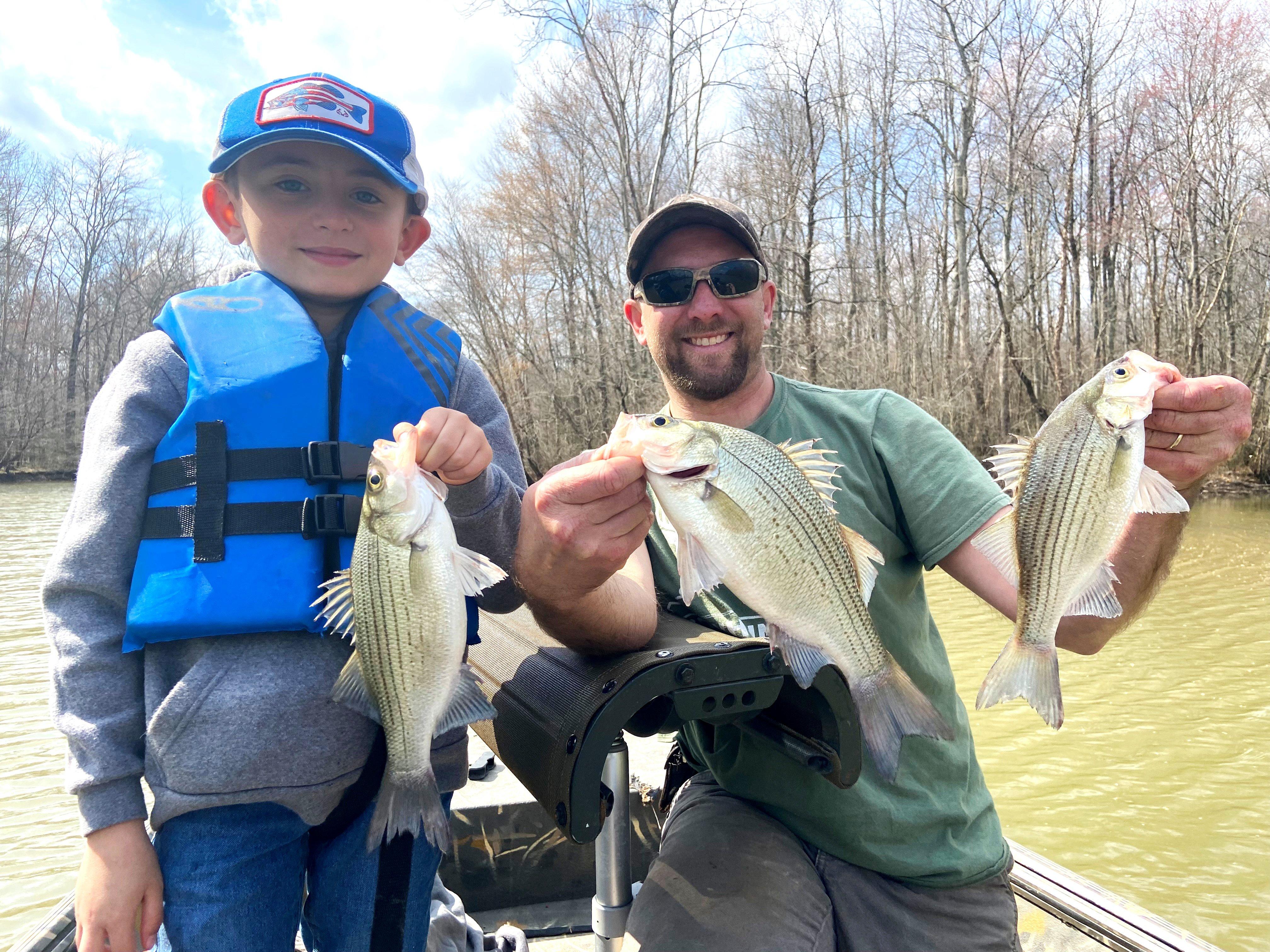
These white bass were caught on crankbaits in a creek mouth in early March.
EATING WHITE BASS
These fish suffer from a mixed reputation on the table. I’ve even fished with Midwestern walleye anglers who consider white bass (they often call them “wipers”) to be trash fish. Larger white bass do have a deep “red line” on their fillet that can have a strong flavor. It takes about 5 seconds to cut the most offensive portion of that red line out of the fillet. With it gone, white bass fillets are mild and white, flaky enough, but not as soft as crappie fillets. The firmer texture means they hold up better when blackening in a skillet or grilling them — and of course, they’re excellent for deep frying. I did a blind taste test during a fish fry here at home the other day with seven different people and a mix of fried white bass and fried crappie fillets. Five of the seven preferred the crappie, but said they’d be happy with either. Two of them said the white bass fillets were better because of the firmer texture.
At minimum, they’re worthy of a meal and — given all of the other great things about white bass — they’re worth a serious look as the “other panfish” of spring.
- DON’T MISS: How to Freeze and Store Fish for Maximum Flavor

